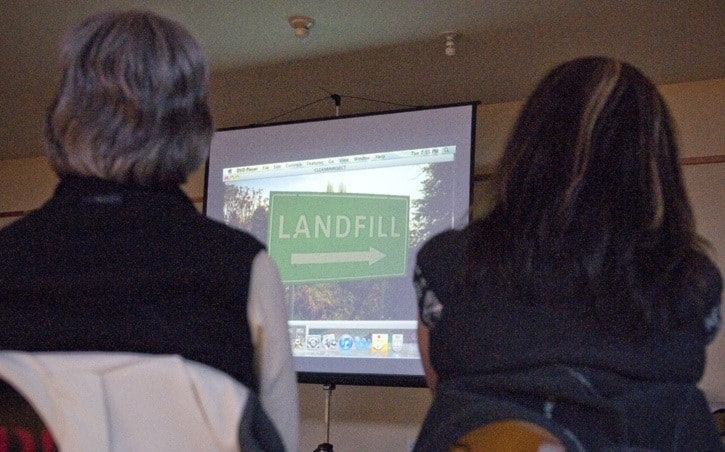It’s a small world sometimes.
The interconnectedness was highlighted last week when a Vancouver couple’s film, called The Clean Bin Project, was shown in the Fort St. James Bicentennial Library.
The couple who made the film — Jen Rustemeyer and Grant Baldwin — actually met right here in Fort St. James while they were treeplanting.
But their adventures together didn’t stop there, and the pair are now working professionals in Vancouver, Jen works for a green building non profit and Grant is a music producer and filmmaker.
The pair decided one day to challenge each other to living one year without waste, it would be a contest between the two of them to see who could produce the lease amount of garbage over an entire year.
The rules were pretty straightforward: no buying stuff; avoid non-recyclable and excess packaging on the stuff they did have to buy (food mostly); and take responsibility for their own waste, bringing recyclables and compostables they produced home to deal with.
Then they made a feature-length film about it, also with the help of their roommate .
While you might think a film about a couple not making garbage might be a bit too dull or just be an endless lecture on how we all need to MAKE LESS GARBAGE, it wasn’t.
Grant is a very talented filmmaker, the visuals are riveting and fast-paced, he makes great use of time-lapse photography and the couple themselves are interesting and engaging people who have a fun and humorous approach to the project and each other.
He also uses some archival footage and speaks to some seriously noteworthy people.
Renowned artist Chris Jordan is featured in the film, Jordan’s digital photography artwork provides some really strong imagery to put into perspective how much waste our society is actually producing. Some of his images from a distance will resemble one thing, but up close, is actually made up of millions of pieces of something which usually represent how much of a substance we produce as waste.
One of Jordan’s project series documents the albatross chicks dying on remote Midway Island from the garbage their parents are mistakenly feeding them from the plastic-choked ocean. Ten thousand of the albatross chicks die each year because they become full of plastic.
The film also interviews marine pollution expert Captain Charles Moore, who studies the Pacific Garbage Patch, which is a massive accumulation of plastic waste twice the size of the state of Texas floating in the Pacific Ocean.
The film also looks at how our society has changed over recent generations to create massive amounts of waste per capita, much of it due to disposable items.
Their year-long journey of exploration of their own consumption makes for a surprisingly compelling film, and one I will think of whenever I forget to ask for no straw in my drink or bring my cup to the cafe.
The film has won numerous awards, and continues to be screened across North America.
Greening Up Fort St. James was showing the film, and plan on showing it again in the community.
